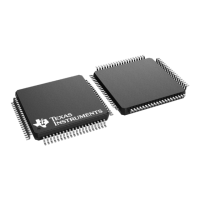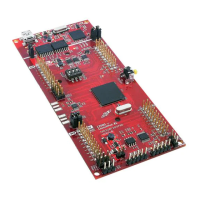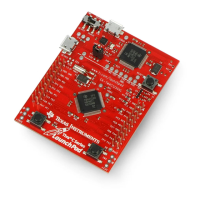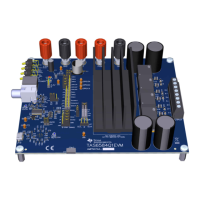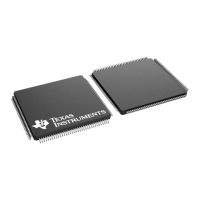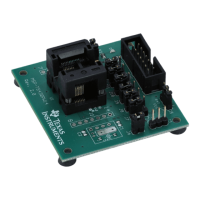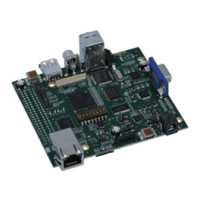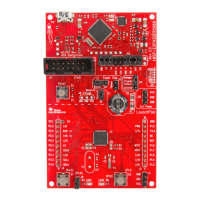System and Peripheral Control Registers
www.ti.com
240
SPNU563A–March 2018
Submit Documentation Feedback
Copyright © 2018, Texas Instruments Incorporated
Architecture
2.5.3.30 Peripheral Frame 0 MasterID Protection Register_L (PS0MSTID_L)
There is one bit for each quadrant for PS0 to PS31.
NOTE: If a module occupies two quadrants, then only the lower quadrant register is used to enable
or disable the masterID. The upper quadrant register remains zeros.
The following are the ways that quadrants are used within a PS frame:
a. The slave uses all the four quadrants.
Only the bit corresponding to the quadrant 0 of PSn is implemented. It protects the whole 1K-byte
frame. The remaining three bits are not implemented.
b. The slave uses two quadrants.
Each quadrant has to be in one of these groups: (Quad 0 and Quad 1) or (Quad 2 and Quad 3).
For the group Quad0/Quad1, the bit quadrant 0 protects both quadrants 0 and 1. The bit quadrant 1 is
not implemented.
For the group Quad2/Quad3, the bit quadrant 2 protects both quadrants 2 and 3. The bit quadrant 3 is
not implemented
c. The slave uses only one quadrant.
In this case, the bit, as specified in Table 2-115, protects the slave.
The above arrangement is true for all the peripheral selects (PS0 to PS31), presented in Section 2.5.3.31 -
Section 2.5.3.32. This register holds bits for PS0 and is shown in Figure 2-101 and described in Table 2-
115.
Figure 2-101. Peripheral Frame 0 MasterID Protection Register_L (PS0MSTID_L)
(offset = 300h)
31 16
PS0_QUAD1_MSTID
R/WP-FFFFh
15 0
PS0_QUAD0_MSTID
R/WP-FFFFh
LEGEND: R/W = Read/Write; WP = Write in privileged mode only; -n = value after reset
Table 2-115. Peripheral Frame 0 MasterID Protection Register_L (PS0MSTID_L)
Field Descriptions
Bit Field Value Description
31-16 PS0_QUAD1_MSTID MasterID filtering for Quadrant 1 of PS[0]. There are 16 bits for each quadrant in PS frame.
Each bit corresponds to a master-ID value. For example, bit 0 corresponds to master-ID 0
and bit 15 corresponds to master-ID 15. These bits set the permission for maximum of 16
masters to address the peripheral mapped in each of the quadrant.
The following examples shows the usage of these register bits.
(a) If bits 15:0 are 1010_1010_1010_1010, then the peripheral that is mapped to Quadrant
0 of PS[0] can be addressed by Masters with Master-ID equals to 1,3,5,7,9,11,13,15.
(b) if bits 15:0 are 0000_0000_0000_0001, then the peripheral that is mapped to Quadrant
0 of PS[0] can only addressed by the master with the Master-ID equal to 0.
0 Read: The corresponding master-ID is not permitted to access the peripheral mapped to
this quadrant.
Write: Disable the permission of the corresponding master to access the peripheral mapped
to this quadrant.
1 Read: The corresponding master-ID is permitted to access the peripheral mapped to this
quadrant.
Write: Enable the permission of the corresponding master to access the peripheral mapped
to this quadrant.
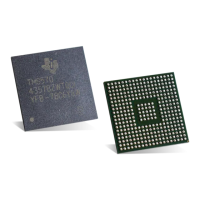
